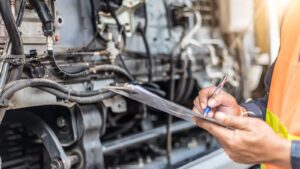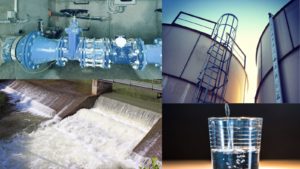In this blog, we are going to unveil the power of this water and wastewater asset consolidation and explore how it can transform your water and wastewater asset management for a more sustainable and cost-effective future.
We will discuss about:
- Comprehensive Unification
- IoT Dominated Smart Dashboards
- Predictive and Prescriptive Powered Maintenance
- GIS Mapping
- AI-Based Asset Health Monitoring
- Digital Twin Encouraged Virtual Process Analysis
- Data Integrity via Sensors, CCTV and Laser Technology
- Remote Accessibility
- Risk Control Platforms
- Digital Indication Of Assets Via BIM Modelling
- AI-Powered Energy Management
3. How to Implement a Control Tower
4. Benefits of the Water & Wastewater Control Tower
- Uninterrupted Water Supply
- 15 + Years Guaranteed Asset Life
- Real-Time Visibility
- Cost Efficiency
- Data Analysis and Reporting
- Demand Management
- Increased Capacity
- Improved Communication
5. Why are Tigernix Asset Solutions the Best Choice for Control Tower Managers?
What is a Control Tower?
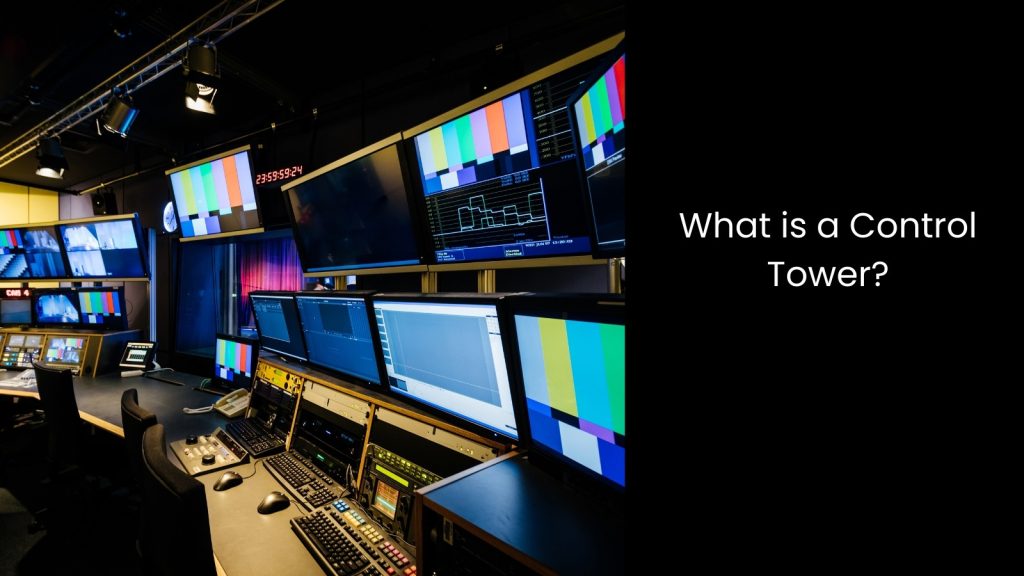
This is actually a data control gear and platform. It integrates information from various sources across a certain network, such as water levels, treatment schedules, weather data, equipment sensor readings, etc., into a single, real-time view. This gives an overall and complete picture of each element of the subject matter and empowers users with advanced analytics to identify bottlenecks, predict disruptions, and make data-driven decisions for process optimisation.
These control towers are dominated by automation and machine learning to automate tasks, trigger alerts for potential issues, and even recommend corrective actions. The world rapidly goes with these control towers as it seems to be beneficial for industries to receive a complete 360-degree view instead of receiving data from each tiny component.
Top Technologies Equipped by The Control Tower
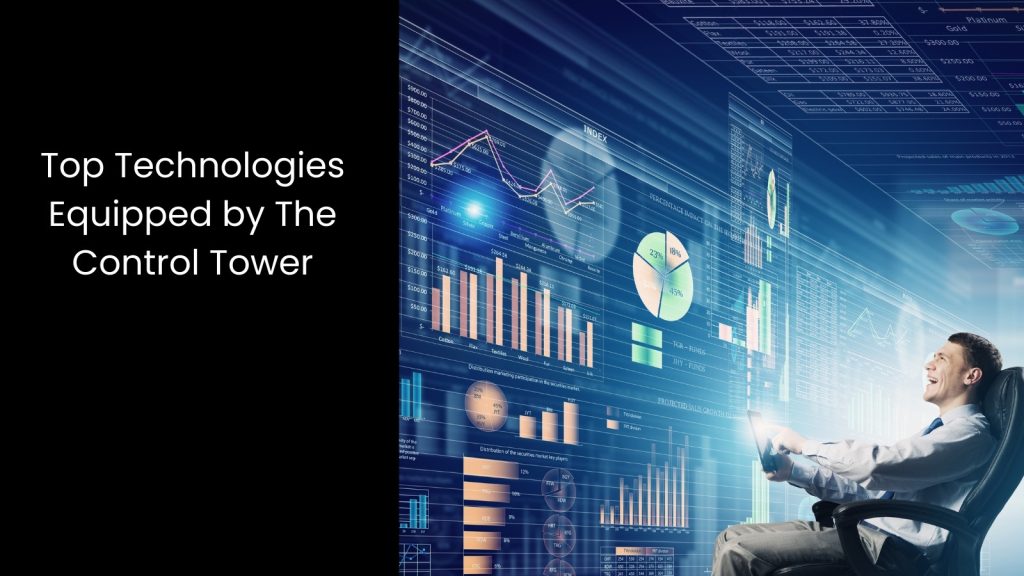
Comprehensive Unification
A control tower acts as a central panel that integrates various technologies and processes to remotely gather and configure data. It unifies this information, making it comprehensible for authorities through data visualisation. This synthesis backs up real-time monitoring and informed decision-making by presenting complex data in an accessible format. The control tower is the commanding centre for all the operations while monitoring their progress virtually.
IoT Dominated Smart Dashboards
IoT smart dashboards collect real-time data on water quality and equipment status via deployed sensors. These gathered data streams to central systems, undergo edge computing for quick insights, and integrate into the cloud for storage and processing. After that, advanced analytics identify patterns and predict issues. As the last stage, smart dashboards visualise this data, send alerts for critical events, and generate detailed reports. Since it integrates multiple data sources, these dashboards provide comprehensive analysis in real-time.
Predictive and Prescriptive Powered Maintenance
They predict equipment failures to extend asset life, enhance energy efficiency, ensure water quality compliance, forecast demand, and detect leaks. This includes various techniques, such as sensors, vibration analysis, thermal testing, etc., to continuously monitor conditions and gather real-time data. Then, as the next step, advanced analytics processes this data to identify patterns and anomalies while condition monitoring detects early signs of wear. What occurs next is trend analysis and predictive modelling, which forecast potential failures and prescribe actions to take to overcome them. The control tower sends real-time alerts to notify maintenance teams, enabling prioritised scheduling.
GIS Mapping
It aids water and wastewater plants through its capacity to provide precise spatial data for infrastructure management, leak detection, and maintenance planning. It enhances asset tracking, streamlines operations, and supports emergency response through real-time mapping. GIS mapping also helps with regulatory compliance, environmental monitoring, and efficient resource allocation while offering data on water quality, flow rates, and system performance.
AI-Based Asset Health Monitoring
As the control tower comes with AI-based asset health monitoring capabilities, it is easy to receive historical data and real-time operational conditions for predictive maintenance. It detects anomalies in asset performance, encouraging early intervention. This enhances water and wastewater plant operations with its ability to optimise chemical usage, reduce costs, and minimise environmental impact. Going beyond traditional limits, continuous condition monitoring ensures optimal asset health. AI can diagnose faults and suggest optimisations, track asset life cycles for timely replacements, and integrate with IoT for comprehensive analysis. It assesses risks, offers operational insights, and forecasts performance as the outcome.
Digital Twin Encouraged Virtual Process Analysis
Digital twin technology aids authorities with its power to simulate real-world operations in real-time, optimising processes. It monitors performance metrics accurately, using historical data and simulations for predictive analytics and forecasting. On the other hand, scenario testing helps with evaluating various process scenarios for improvements and risk mitigation. This is how the plants can develop optimisation strategies to enhance efficiency and resource use.
Data Integrity via Sensors, CCTV and Laser Technology
When it comes to data integrity, Sensors collect accurate real-time data on various parameters like water flow and quality. In another way, CCTV monitors physical infrastructure for security and operational integrity. Plus, Laser technology aids in precise measurements and inspections. Together, these technologies provide reliable and comprehensive data, which gets streamed into a central panel, configured and processed via data visualisation tools.
Remote Accessibility
The control tower is the place where remote accessibility occurs through software interfaces that enable real-time monitoring and control from any location. These interfaces integrate data from sensors, CCTV, and other monitoring devices such as GIS mapping, CAD, etc., presenting it via intuitive dashboards. Operators can remotely access and manage plant operations, troubleshoot issues, and make adjustments promptly.
Risk Control Platforms
A robust risk control platform within the control tower detects risks, anticipates future challenges, and implements effective control measures easily. It integrates real-time data from sensors and monitoring systems to identify potential threats to operational integrity and environmental compliance. With its embedded advanced analytics and predictive modelling, it provides foresight into emerging risks. This proactive approach aids in timely preventive actions, ensuring operational resilience.
Digital Indication of Assets via BIM Modelling
Control Panel comes with integrated Building Information Modelling (BIM), which is there to scale up water and wastewater asset management as it can create detailed digital representations of infrastructure. It aids in precise visualisation, real-time data sharing, and streamlined collaboration among stakeholders. These BIM models facilitate the identification of potential issues, such as structural weaknesses or inefficiencies, and they have the power to simulate various scenarios and analyse system performance. Apart from the above capabilities, BIM aids in pinpointing areas needing upgrades or maintenance by continuously monitoring asset conditions and BIM modelling in the control tower helps associating more complex asset data easily while managing them efficiently.
AI-Powered Energy Management
This begins with real-time data collection on energy consumption from sensors and metres. This data integrates with operational metrics for comprehensive analysis. Predictive analytics and historical patterns are there to forecast future energy demand and peak usage periods for proactive load management. What is more, AI optimises energy usage, responds to real-time pricing, detects inefficiencies and faults, automates processes, and provides detailed reports and insights in the last stage.
How to Implement a Control Tower
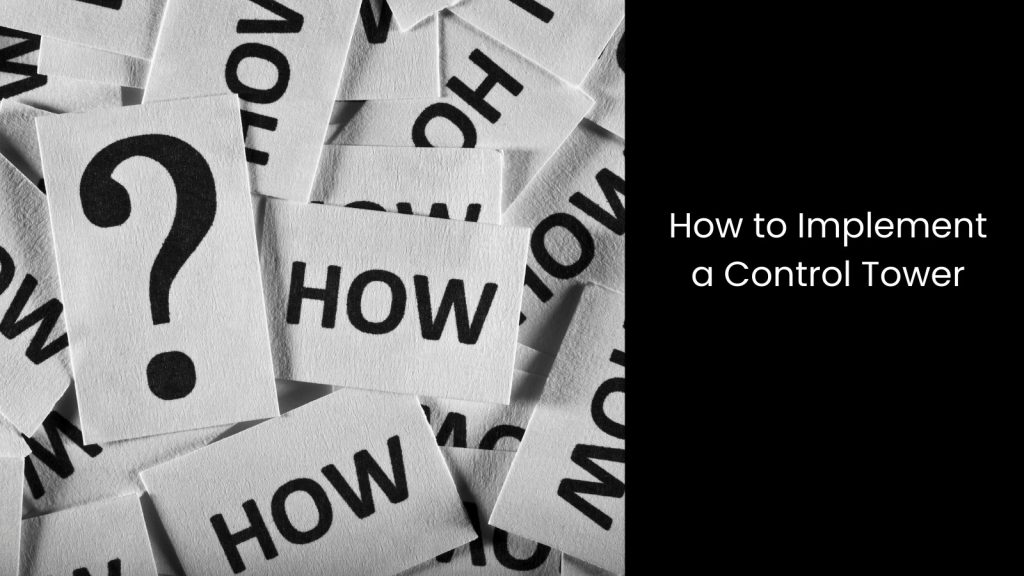
A control tower in water and wastewater treatment facilities centralises monitoring and optimisation of various treatment processes. However, it is not an easy task as it requires both physical and technological setups.
Physical Setup Requirements
- Centralised Location– You need to choose a central, accessible location with good visibility of key treatment units.
- Ergonomic Design-It is essential to design the space for comfort with ergonomic chairs, multiple monitors, and proper lighting to minimise operator fatigue during long shifts.
- Communication Infrastructure– It is a must to ensure reliable network connectivity, like 5G, for real-time data access and communication with field personnel.
- Visualisation Tools-Installing large display screens or video walls to present key performance indicators (KPIs), process flows, and alarms is another mandatory aspect.
Technological Setup Requirements
- Data Management System- Integrate a data management system to store historical data, generate reports, and trend analysis for process optimisation.
- Decision Support Tools- Consider implementing advanced analytics or machine learning tools for predictive maintenance, anomaly detection, and optimising resource allocation.
- Industrial Deionised Water System Controls- It is vital to manage ion exchange processes, regeneration cycles, and purity monitoring to ensure consistent production of high-quality water for specific industrial applications.
- Membrane Filtration System Controls- This ensures precise control over filtration parameters like pressure, flow rates, and backwashing cycles to maintain filtration efficiency and water quality.
- PLC and HMI Programming- The latter is important for real-time monitoring, data logging, and remote access for operators to manage and troubleshoot system operations effectively.
- Reverse-Osmosis Control Systems- This can control the reverse osmosis process used for desalination or purifying water by removing dissolved salts and contaminants.
- Safety and Alarm System Control Panels- It is essential to monitor safety parameters such as water levels, temperature, and pressure within the facility.
- SCADA System (Supervisory Control and Data Acquisition)- The core software, SCADA, provides real-time data acquisition, monitoring, and control capabilities for various treatment units (pumps, filters, etc.).
- Water and Wastewater Reading Automation- This is needed to monitor and control parameters such as flow rates, chemical dosing, and treatment stages to optimise performance and compliance with regulatory standards.
Other Requirements
- Security- You must implement robust cybersecurity measures to protect sensitive data and system integrity.
- Standardisation- Implementing standardised operating procedures (SOPs) for data interpretation, alarm response, and communication protocols is a priority.
- Training- It is necessary to train workers on using the control tower software, data analysis, and decision-making processes.
Benefits of the Water & Wastewater Control Tower
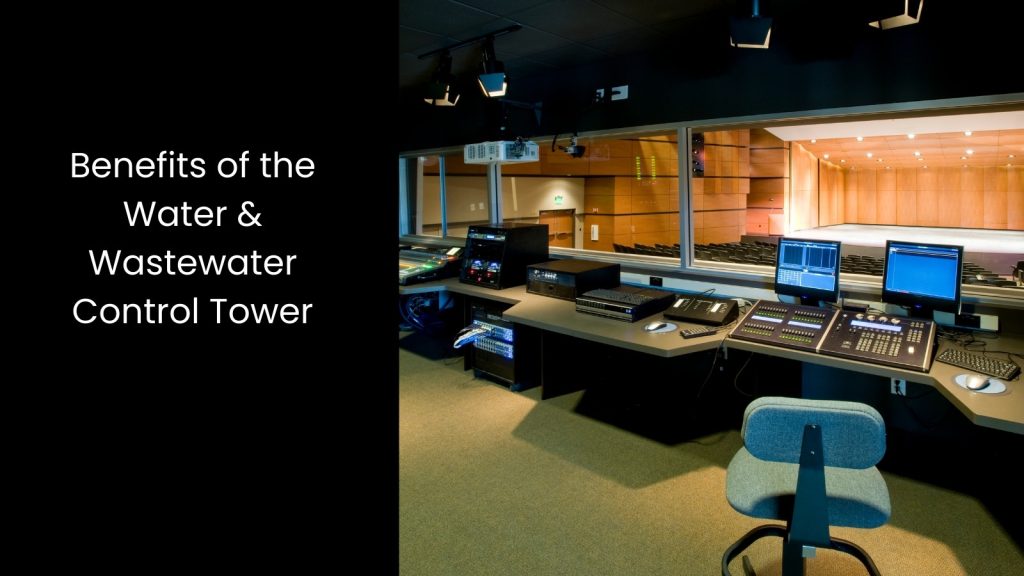
Uninterrupted Water Supply
Controlling water and wastewater operations through a unified control panel facility ensures uninterrupted water supply from the plant. As this centralises monitoring and management of critical processes like treatment, filtration, and distribution, operators can quickly respond to fluctuations, optimise resource allocation, and proactively address issues. This centralised approach takes care of everything from one location remotely.
15 + Years Guaranteed Asset Life
As all the data about water and wastewater assets is gathered and streamed to one specific physical hub, it is easy to inspect the faults, correct them at once and foresee the potential asset-related burdens while finding the best solutions and sharing the knowledge and giving instructions from the control tower, which makes the water and wastewater assets smoothly running for 15+ years.
Real-Time Visibility
As this is a data consolidation centre, it offers real-time visibility in the water and wastewater industry by aggregating and analysing data from various sensors and systems. This visibility helps the personnel behind the monitors at the control tower to monitor water quality, flow rates, and equipment performance instantly and communicate them to the workers in the field. It aids in detecting anomalies promptly and enhances operational efficiency.
Cost Efficiency
This data consolidation centre aids in achieving cost efficiency by centralising data management and control. This eliminates the need for multiple, disparate systems, reducing hardware and maintenance costs. It streamlines operations by providing a single platform for monitoring and managing processes, improving resource allocation and reducing redundancy. This centralised approach optimises energy usage and enhances operational efficiency, leading to significant cost savings for separate systems.
Data Analysis and Reporting
As it acts as a centralised data control facility, it enhances data analysis and reporting by collecting and analysing operational data under one roof. This unified approach allows for comprehensive insights, identifying patterns and inefficiencies across systems. Since they receive all this data, plants can develop improved operation management strategies and optimise overall performance. The centralised nature of the facility ensures consistency, accuracy, and timely access to critical information.
Demand Management
Due to the power of the control panel, it is easy to manage demand as it helps to monitor real-time usage data and analyse trends. It provides insights into current consumption patterns and predicts future demand through advanced algorithms and historical data. This supports your operators in optimising resource allocation, anticipating peak usage periods, and planning for infrastructure upgrades. As the latter can offer a comprehensive overview, the control panel ensures efficient system management and supports sustainable water and wastewater operations.
Increased Capacity
A control tower enhances capacity for water and wastewater operations via its capacity to manage a higher volume of data from water collection, treatment, and distribution using advanced technologies and efficient procedures. It centralises data flow, allowing for real-time monitoring and optimisation. This comprehensive oversight improves resource allocation and system responsiveness, ensuring smooth operations and the ability to handle increased demand without compromising quality or efficiency.
Improved Communication
This centralised facility improves communication among teams by facilitating clear and continuous communication between system controllers and field workers in the water and wastewater industry. With everyone controlled by the main control panel, it ensures precise and timely instructions are relayed. This centralised approach enhances coordination, reduces misunderstandings, and ensures that all team members are aligned and informed, leading to more efficient operations and quicker response times to any issues or changes.
Why are Tigernix Asset Solutions the Best Choice for Control Tower Managers?
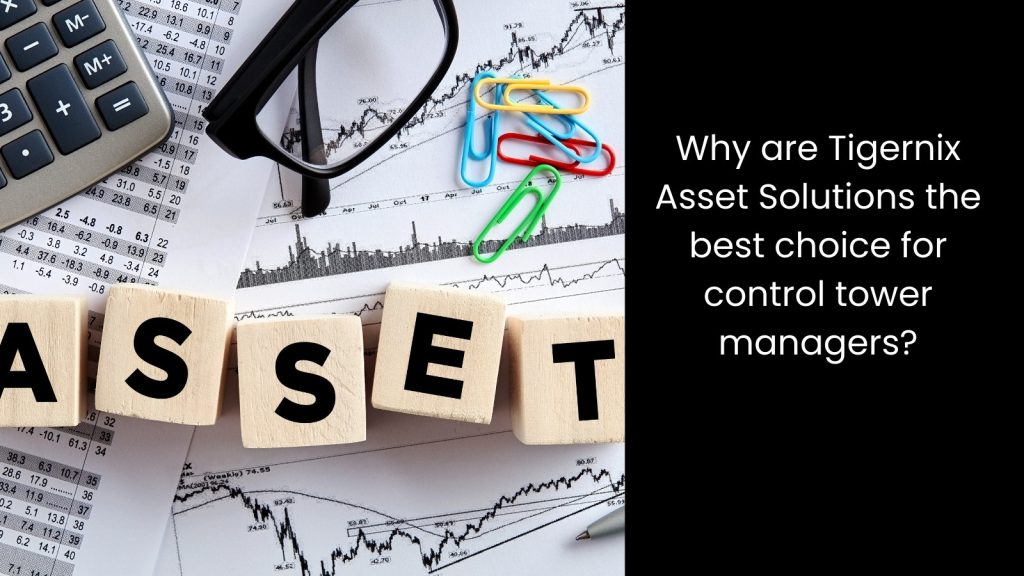
360 Degree Vision of Asset Processes-Tigernix dominated control tower is one consolidation platform where you receive a massive volume of data streaming down from the operational floors of water and wastewater plants into one roof. With such comprehension, your control tower operators receive a 360-degree view of each aspect in real-time.
Accurate Financial Foresight and Planning– Our control centre is powered by robust financial modules, which can help the water and wastewater authorities with financial foresight to find out where they need to invest, and this is one of the distinguishing features of the Tigernix suite. Every historic financial investment and its impact have been recorded inside the control tower, which gives the authorities the ability to make wise decisions and plan potential investments smoothly.
Comprehensive Data Visualisation– As this control tower comes with systems that have embedded data visualisation tools, it paves the way to enhance understanding by transforming complex data into intuitive visual formats on smart dashboards. It employs various methods such as graphs, charts, heatmaps, and GIS maps to present data trends and patterns clearly. These visual tools help your control tower workers with real-time monitoring, quick insights, and simplifying data interpretation.
Controlling Air Pollution– Tigernix solutions are powered by robust air management techniques that take care of air quality and distribution by controlling ventilation, temperature, and humidity. It uses sensors and advanced algorithms to ensure efficient air circulation and maintain optimal indoor conditions. This enhances comfort, reduces energy consumption, and improves overall health and productivity.
Cost-Saving through Virtual Experimentation– The water and wastewater plants can smoothly execute their process and machinery research, developments, and experiments without spending an unbearable amount of money on physical trials as the Tigernix control tower has embedded Digital Twin technology.
Embedded Energy Efficiency Tools– Our control tower is enriched with the ability to look into the plant’s energy management chores under a singular control panel. It helps optimise energy use by monitoring, controlling, and automating energy consumption across various systems. The personnel who handle the panel can employ real-time data and advanced analytics to identify inefficiencies and suggest improvements. This reduces energy costs and environmental impact.
Four Pillar Solution– Our water solution covers each aspect of the water asset management from catchment, treatment, and distribution to reticulation, while our wastewater asset solution comes with collection, pumping, treatment and reuse suits.
Green Promise through Industry 4.0 Capabilities– Our control hub is strengthened by Industry 4.0 digital capabilities, where the authorities can put more weight on developing their greener initiatives to align their operational goals with sustainable practices, showing gratitude to Mother nature.
Workforce Safety– Our control tower enhances workforce safety by centralising monitoring and control of critical operations in real-time. It integrates safety protocols and alarms, ensuring immediate response to hazards or emergencies. Since our tower has clear visibility and data-driven insights, it promotes proactive risk management and compliance with safety standards.
Concluding Note
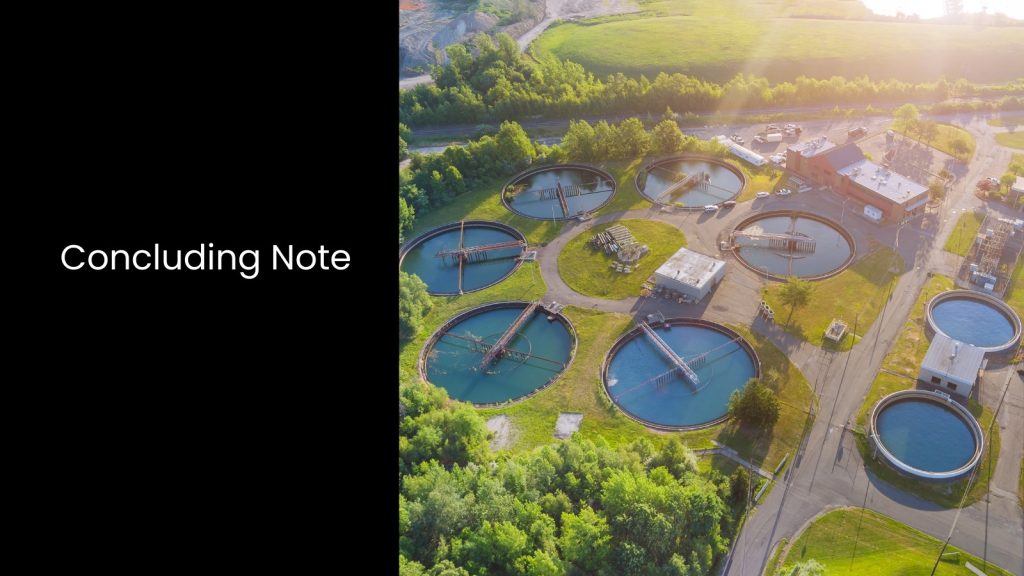
So, as you can see, in order to stay away from data handling and management burdens, the best implementation to execute is opting for a Water and Wastewater Control Tower. Tigernix is a pioneer in the industry with 4+ years of excellent technological implementation records that have the potential to aid you in this.

